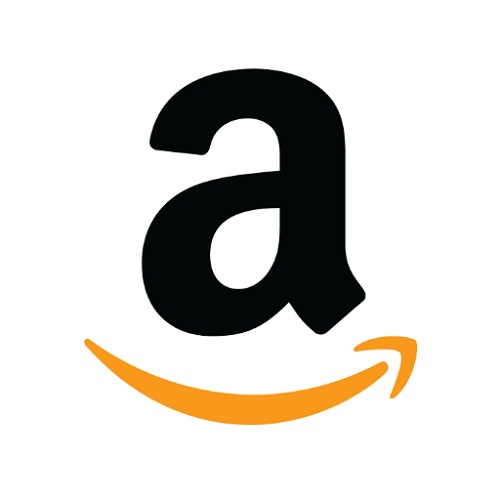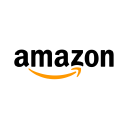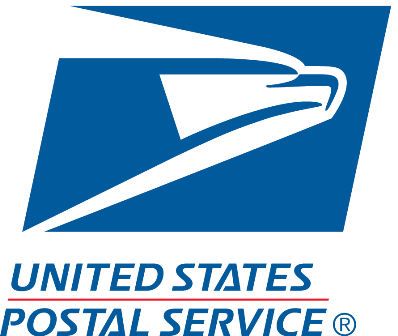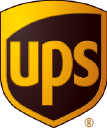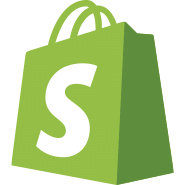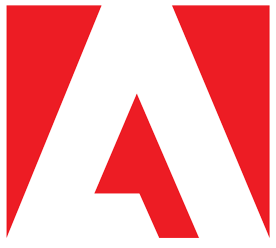On Creating A 3D Printer And Creativity Platform For Kids
Howdy! My name is Ben Baltes and I'm the co-founder and CEO of Toybox Labs. We create a 3d printer and creativity platform that lets kids find, design, and print the toys they love right at home. Here’s a video to help visualize.
We’ve had an incredible journey with TONS of failures, brutal setbacks, and incredible successes. We’ve felt from brutal sting of only selling 2 units on our first 2 months of business, to scaling to millions of dollars of revenue a year. We’ve taken trips to desolate cities China to find suppliers, we learned to wire electronics the hard way (with lots of explosions and sparks), and even appeared on TV where Kevin O’leary invested in our company.

Though we’ve grown tremendously, we are still just beginning our long journey as entrepreneurs. I’ve never shared our journey publicly so I’m very happy to finally share this with you and the Starter Story community today. Also, this makes a great Holiday present and if you make it through the story, I’ll give you guys a fat discount so you can have happy kids at home. :)

What's your backstory and how did you come up with the idea?🔗
My founders and I all LOVE building. We’re freaking obsessed with it and it’s an incredibly empowering experience to us. It’s the reason we all bonded as friends.
It’s important to grow a thick skin and learn to never give up when the waves get rough.
When I first graduated college I got my dream role as a developer at Microsoft. Now that I was making a decent paycheck, it meant that I was finally able to chase some of the more audacious building projects that I had in mind. I always wanted to make physical things, like robots, not just simple things like apps, and luckily 3d printing was blowing up at the time and could make that possible.
With my first paycheck, before I even paid for furniture in my apartment, I bought a 3d printer. Pretty soon my three closest friends came over every day to build things. We built all types of things and it was freaking incredible.
My friend, Jenn, was building everything from custom lampshades, to art that you could hang on your wall that would actually pop out at you. My friend Zach and I were designing a 3d printer that could snap completely together like Legos, and my friend Andy (who later left the company) was building humanoid robots that were controlled remotely by his parents in Guatemala. It was an incredible time and we were FINALLY able to build the cool type of stuff that we always wanted to. We were like kids playing with Lego or Minecraft again.
That’s when it hit us -- what if kids had this capability? By bringing a 3d printers into the home, kids could not only find and print their favorite toys, but they would have the capability of modifying or even design their own custom toys to play with. Kids already consume $81 billion dollars of plastic toys, what kids could make those at home, better yet, what if we could make them all biodegradable!
The problem at the time though was two fold.
- 3d printers were wayyyyy too expensive
- The status quo of the 3d printing experience sucked for kids (it took us months to get comfortable with it as highly technical adults).
We figured if we could figure out how to build this thing at a low price and with great user experience, then we could absolutely take the market by storm. Luckily, we were all user experience engineers with a knack for hardware. So we set out to do it.
Take us through the process of designing, prototyping, and manufacturing your first product.🔗
The process of building the product was brutal and we learned a lot of hard lessons along the way.
There were two major components to this product. First, was the hardware system that powered the product, and second was the software system that enabled kids to print thousands of toys and design their own - both were pretty massive feats of engineering and design.
Given that we were well versed in software and experience design, building the software system was relatively easy compared to the black box that hardware was. Don’t get me wrong, building the entire cloud operating system and bringing in thousands of toys and testing them was very very time consuming but the hardware design, was a whole different animal that we didn’t have the expertise for. We considered designing and building our own in-house because Zach (our CTO) and I had some experience prototyping some, but we quickly found out that product design, manufacturing, and supply chain setup would quickly cost half a million to a million dollars.
We only had $10,000 in the bank.
We realized there was no way in hell we could spend so much money on creating our own hardware, so I looked for reliable 3d printing companies and knew of one in the area. It was an (at the time) very hot 3d printing company, and I found the CEO’s email on an old message board.
Without any network to get in contact with him, I fired off a cold email explaining that I business proposition for him. To my surprise, he replied and invited me to come discuss it at his factory! As an entrepreneur, you often are throwing hail mary’s that never amount to anything, but sometimes they do and those are the ones that matter.
When I met with the CEO I was nervous, I had never done a deal like this before and I was practically shaking. But I was very impressed with his factory and the CEO’s attitude, and he surprisingly entered an agreement with me.
The agreement eventually never ended up panning out due to pricing issues and we ended up spending the better part of a year in-house designing hardware and looking for OEMs that could manufacture something reliable, inexpensive, and attractive. We tried everything to keep costs low. We 3d printed our original printers and even made versions out of CNC’d staircase wood bought from home depot to help automate production.



In a way, we were spinning our wheels--we were making progress but we were so far from a production-ready version. But that bought us enough time to be contacted by an outside party about potentially being our OEM. The price was right, the hardware was attractive, and the quality was great- I was skeptical because of the luck involved with this interaction, but everything seemed to line up. At that point, We took the rest of our savings, bought as many base printers and components we could, and I assembled and soldered our custom pieces together on my living room floor to build the first 20 units.
Describe the process of launching the business.🔗
Before we even had a product we tested the market pretty extensively. Not many people know this, but Toybox started from a string of projects that we had. We had witnessed people waste a lot of time building out previous products that sounded cool but had no market so we got in the habit of testing concepts with the market before we built them.
With Toybox, we created a website advertising a product that didn’t exist. It was complete with a checkout which opened a notification that said the printer wasn’t available for purchase. We did initial tests and we saw that people were coming to our website and clicking the button to purchase at pretty high rates. On top of that, a few publications somehow found us and we're writing about us. We even got our first cease and desist within 2 weeks. We figured this attention was a good sign and that we could make a splash.
At that point, I quit my job and we put all of our money into making prototypes, by the time we had one that we thought was ready. We did our big launch on the website. We were expecting to sell 50-100 given that our email list was about 400 people strong. We ended up selling two, one was outside the country and we couldn't ship to him, and the other was in New York. After about a year of hard work, we had one sale to show for it, it was humiliating and I felt absolutely crushed- I let myself down and the entire team.
Based on this experiment, we figured that selling online wasn’t going to work so we wrote a script to scrape yelp and email every toy store in the area to see if we could do a partnership and sell in their stores. We emailed about a hundred stores and two replied. I demoed to the first one and that fell through. The second toy store owner, when I demoed to him, the product demo didn’t even work - we had a bug that day that broke the printing system. It was embarrassing, but I think he felt bad and said he’d let us set up in the store to sell them whenever we wanted.
Me and my co-founder, Jenn, went to the store to sell printers every weekend for 6 weeks and didn’t sell a single one. It was humiliating, and I was embarrassed that the owner saw us fail so many times, but we kept trying. We tried switching up the story, we tried exaggerating about how many we sold, we tried time sensitivity, we even stacked up 20 empty boxes behind us to make it look like it was a high selling product, but nothing would sell. It was so confusing, we’d gather crowds, people would be very interested, they would say they wanted one, but no one would buy. We couldn’t believe it.
My co-founder Andy eventually flew down and came to sell printers with me one weekend. He was saying the same thing and confused we decided to do a sanity check. The total purchase price of the printer and materials to build the printers was $500. I wasn’t willing to go under that point because we’d be losing money, but as a sanity check, we decided to try $150. The very first person we talked to purchased the printer. Then we went up to $200 and sold another within 30 minutes. We finally went up to $300, and that's when people would think and purchase it. We knew we couldn't sell at scale and even break even at $150 or $200, but at $300 we might be able to. Even though we lost a lot of money and time that day we learned a couple of incredibly valuable lessons.
- Pricing and demand is not a linear function -- In fact, almost nothing regarding consumer behavior is. When the price is too high, it’s not that proportionally fewer people will buy the product. In fact, if the price is too high, almost NO-ONE will buy the product. (The same can be said about the threshold of quality on your web site, assets, and product, but that’s a different lesson altogether)
- We learned that at a certain price point, we could convince people to buy. That valuable lesson allowed us to negotiate rates with an anchor in mind. We knew what price to negotiate around, and that determined the quantity we needed to purchase. For us, that number was 1000 units in the first year.
We ended up working around that number, and a close friend and advisor of ours from Microsoft named Justin said he’d invest money into the startup if we sold 20 printers at the upcoming Makerfaire. We didn’t have much time before the show, so I bought 20 printers scheduled to arrive 3 days before Makerfaire to assemble. Then, when they arrived, we found out that the manufacturer changed the design on us without telling us, and the hardware would no longer work with our software. We now had 0 printers to sell for Makerfaire. I was f’ing livid, our future was riding on this and we were screwed 3 days before the show. I tried everything for 3 days straight to try to make the new system work but couldn’t.
Crushed again, we went to Makerfaire with the 3 demo units we had. But this time it was a splash. We had an agreement to sell printers so we didn’t let the setbacks stop us. We decided to try sell printers on preorder and we sold out of 20 units that on the first day of Makerfaire. It was an amazing relief and our advisor ended up closing the investment. Better yet, we got the interest of Kickstarter and Indiegogo and they encouraged us to run a campaign and gave us some sweet deals. We ended up taking all of our investment money and running a campaign. This yielded a decent Kickstarter (especially with the small amount of investment capital we had at the time). We shipped our first units on time, and people actually liked the product. It led to more and more sales and we learned a valuable lesson again:
- Push through the setbacks, they are going to happen ALL THE TIME and they literally don’t stop the larger you get. Learn to navigate and roll with the punches - most people give up way too easily.
- A hardcore focus on product quality leads to viral growth amongst customers. This is the best type of growth because it doesn’t cost extra money, in today’s environment with hyper-connectivity and competition in advertising channels, you absolutely need at least some virality.
- By having a great product, we actually became fairly close to our first customers. Those first customers became our investors for the next round of financing and we’re still very close to them today.
From there, linear increases in our advertising, pricing, the product have to lead to exponential results. We’ve learned how to sell online quite effectively and have been scaling that muscle with pretty high levels of growth - but it took relentless effort and a lot of brutal scars to figure this out.
Since launch, what has worked to attract and retain customers?🔗
The top of our funnel is advertising. Most of our newest users come in through our advertising pipelines, but the effect is further multiplied by the fact that many of our users recommend the product. If it was for straight advertising, we would lose money for every printer sold. But we can see the network effects from people recommending the product, so even though we might not make money from the first printer we sell in a closed ecosystem, we don’t have to pay to acquire the second and third users that get recommended. Overall, we do have profitable unit economics because of this.
We aren’t the cheapest printer on the shelf, and that’s because we know we wouldn’t get residual sales from recommendations if we skimped on the product to drop the price. If you actually consider our BoM list and the quality of the components we used, we actually provide a great value. We use a steel case with high-quality motors which results in a more expensive product. Regardless of it being for toys, it prints at a very high quality and can print very quickly. It’s really critical to nail this down, a better product leads to viral growth which supplements advertising to make it profitable. If we skimp, we would be racing to the bottom and no one would refer the product. It’s an important lesson to fight the urge to cut corners and to provide strong value for people.
In terms of retention, most of it has to do with the content we bring to the system. We’re always making sure the content that we bring in is fresh and it gives people a reason to come back and look for more. We’re actually investing pretty heavily in creating amazing toys with a great story in the next couple of months so some interesting things will be in the pipeline.
How are you doing today and what does the future look like?🔗
We’re not yet profitable but we’re growing pretty fast. Our focus right now is bringing the best quality experience to our users, and since our unit economics are decent, we’ll be profitable as we scale. We would really love to get this into every home. As I mentioned before, the quality of components we use is pretty high so the hardware margins are narrow.
What we’d really like to do is explore the content and subscription side, so when children want to print their favorite Roblox or fortnite characters, they can purchase them and the licensing fees can go to the correct companies. Either that or sell construction kids with the printer with unprintable components (think to design your own robots or cars with motors).
Since launch, we’ve been growing at about >9x YoY and we’ve gotten to the point where our users are very hyperactive on the platform. These kids are printing upwards of 30 toys a month per kid, and we’ve just noticed that kids are printing a toy on the Toybox network every 1.2 minutes-- we can’t wait to see what the future has in store.
Through starting the business, have you learned anything particularly helpful or advantageous?🔗
When starting a startup, it’s like sliding down ice. You’re desperately scraping with your nails to try to find any type of traction to hold on to. Your hands are bleeding and you’re in pain but the cliff is ahead. Your goal is to find some type of traction before you die. By default, your company is starting in the negative burn direction. Your goal isn’t to immediately have positive returns-- that’s incredibly difficult. Your goal is to start building momentum in a positive direction so when you are positive, you have enough momentum to slingshot into the cosmos.
The whole journey has been incredibly invigorating but at the same time, it can be incredibly difficult. When I first visited the CEO of the 3d printing company that we partnered with, he stopped and asked me if I was really ready for this. He was an animated guy but I remember when he said this, he looked me dead in the eyes and said: “it’s really really hard.” Those words stuck with me, and still ring true today. The part I never expected was that it’s not the work that's hard like with hard jobs. Working relentlessly is the easiest part. The hard part is hearing no a thousand times from prospective investors, clients, partners. It’s hearing that your company or you aren’t good enough. It’s hard when things aren’t going well and that by default 90% of the things you try fail. It’s hard because you invest years of your life and attach your well being to a company. That’s what’s hard, it’s the emotional attachment- so it’s important to grow a thick skin and learn to never give up when the waves get rough. It’s also good to take care of your mental health :)
On the flip side, you’ll meet the most impressive people you’ll ever meet in your life. Some of the people I work with and have been able to talk closely to because of this company are people that I never thought I’d be able to meet in my life. I’ve had incredible experiences like being on Shark Tank, I’ve seen our product placed on Hollywood TV shows, met and talked closely with more billionaires than I’d ever imagined, and read hundreds of messages from happy parents and have thousands of children happy. Experiences like that are impossible to match and I’d infinitely take all the terrorizing experiences of starting a company for these gems, I’d never have these experiences rotting behind a corporate desk.
It’s also impossible to match the joy we bring kids. There is something about the way kids experience joy is so much more authentic and pure than when we’re adults. That joy can be contagious-- so make sure you like what you are extremely passionate about what you do!
What platform/tools do you use for your business?🔗
Ecommerce: Shopify
Team: Google Suite, Slack, Trello
Advertising/Marking: Mailchimp, Clickfunnels, Facebook, Google, Youtube, Instagram, Pinterest
Hiring: Indeed, Angel List
What have been the most influential books, podcasts, or other resources?🔗
I mostly prefer books that follow a founders journey, especially the ones that are brutally honest.
- Shoe Dog - About Phil Knight and founding Nike
- Console Wars - Tom Kalinske and the story of Sea
- Zero to One - Peter Theil when founding Paypal
- Hard thing about hard things - Ben Horowitz and his struggles founding and selling Opsware
- Screw it just do it - Richard Branson’s philosophy
Podcasts:
- Exponent- Great analysis of business for silicon valley tech companies
- How I Built This - NPR about founders building companies
- Masters of Scale - Reid Hoffman’s podcast with founders scaling companies
- Tony Robbins - Usually when going for a morning run to feel good (but for some reason I don’t like to admit this one)
Advice for other entrepreneurs who want to get started or are just starting out?🔗
- Keep pushing and don’t give up. Most people give up far too early. A lot of things have to come together before things start showing traction and that can take a lot of trial and error
- Many people spend their time doing one offs. You should be spending your time finding replicable strategies that you can eventually automate. Find enough of these and every time you find something new it contributes to exponential growth.
- Try to find partnerships so you can and focus on what you are good at. Pick up the pieces where you can’t find great partnerships and persevere through hard work.
Are you looking to hire for certain positions right now?🔗
- Software Engineers
- Toy Curator (3d Printing)
- Toy Designer (3d design, and 3d printing)
- Content - Marketing asset production
Where can we go to learn more?🔗
I enjoyed sharing this story, and I hope you enjoyed reading it as well.

Download the report and join our email newsletter packed with business ideas and money-making opportunities, backed by real-life case studies.

Download the report and join our email newsletter packed with business ideas and money-making opportunities, backed by real-life case studies.

Download the report and join our email newsletter packed with business ideas and money-making opportunities, backed by real-life case studies.

Download the report and join our email newsletter packed with business ideas and money-making opportunities, backed by real-life case studies.

Download the report and join our email newsletter packed with business ideas and money-making opportunities, backed by real-life case studies.

Download the report and join our email newsletter packed with business ideas and money-making opportunities, backed by real-life case studies.

Download the report and join our email newsletter packed with business ideas and money-making opportunities, backed by real-life case studies.

Download the report and join our email newsletter packed with business ideas and money-making opportunities, backed by real-life case studies.

